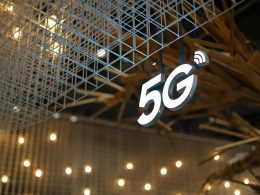Are you eagerly anticipating the arrival of 5G networks in your area? While this new technology promises lightning-fast speeds and unparalleled connectivity, there are a few hidden challenges that may prevent its widespread implementation across the United States. From regulatory hurdles to infrastructure limitations, understanding these obstacles is crucial for anyone hoping to benefit from this revolutionary network upgrade. In this blog post, we’ll dive into the intricacies of implementing 5G networks and explore what it will take to truly make them a reality across America.
The Benefits of 5G Networks
The advent of 5G networks will revolutionize the way we live and work. They will provide faster speeds, more capacity, and improved durability. These benefits have already begun to be realized in some parts of the world, but the United States is still a ways away from fully realizing these potential benefits.
One of the major challenges in implementing 5G networks is that they are very high bandwidth networks. They require large quantities of radio waves and consequently require careful planning and construction. Additionally, 5G networks must operate in hostile environments, including extreme weather conditions and dense urban areas.
Despite these challenges, there are many reasons why the United States should invest in 5G networks. The first advantage is that 5G networks will enable new applications and services that were not possible before. For example, they will enable widespread use of virtual reality (VR) and augmented reality (AR). They will also allow manufacturers to create more advanced cars and devices, as well as new forms of internet-based commerce.
5G networks will also improve our economy overall by creating new jobs in technology sectors like software development, hardware design, telecommunications installation, and logistics management. Finally, 5G networks are expected to play a significant role in improving national security both domestically and abroad.
The Challenges of Implementing 5G Networks
Most people are only vaguely aware of 5G, the next big cellular network upgrade. But if you’re a business or government administrator charged with rolling out 5G coverage in your area, you’re already well aware of some of the challenges: New technology always brings new security and performance risks.
The most pressing issue is the issue of interference. 5G will bring about a massive increase in wireless traffic, which will clash with existing networks and cause serious problems for both users and providers. This is already being seen in some areas where 5G implementations have started; providers have had to erect huge antennas to overcome the interference from other networks.
Another challenge is that 5G requires much more bandwidth than current networks. This means that not all locations can be upgraded at once, and it will likely take many years for everyone to transition to 5G. Meanwhile, businesses and consumers who don’t want to switch will suffer from slower service and increased latency.
And finally, there are regulatory issues to consider. Many governments are still in the process of figuring out how they will regulate 5G networks, and what rules they will impose on them. This can lead to delays while bureaucrats figure out what should be done.
How to Prepare for the Implementation of 5G Networks
There is no one-size-fits-all answer to the question of how to prepare for the implementation of 5G networks, as the deployment process will be different depending on the region in which they are being implemented. However, some key steps that all regions should take into account when preparing for 5G include:
1. Establish a clear strategy and plan for overall network infrastructure upgrades.
2. Prepare regulatory frameworks and institutional policies that support 5G technology growth.
3. Coordinate with other government agencies and private sector partners to ensure seamless integration of 5G into local communities.
4. Invest in research and development to create new applications that can benefit consumers and businesses alike.
Conclusion
5G networks are changing the way we live and work, but there are still some hidden challenges that need to be addressed. In this article, we will discuss some of the key challenges that need to be tackled in order to successfully rollout 5G across the United States. By doing so, we can help ensure a smooth transition for all involved and make sure that these amazing new networks offer everyone the benefits they deserve.












